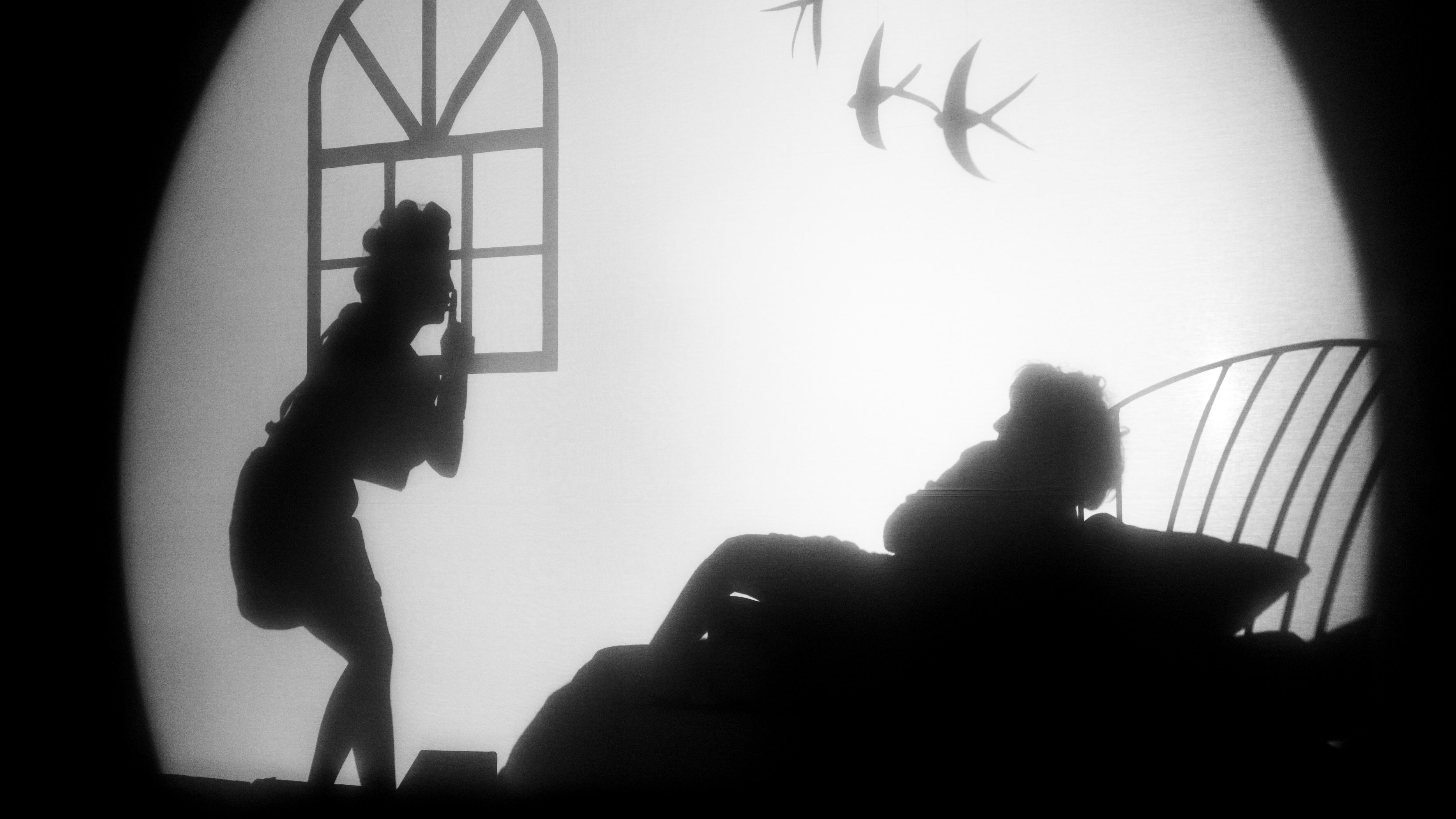Watching Shaking the Tree Theatre’s darkly playful The Brother and the Bird, directed by Samantha Van Der Merwe, demands a spirit of adventure and a strong stomach.
The boundary-breaking company adapted its play from Alissa Nutting’s modern retelling of the Grimm brothers’ fairy tale “The Juniper Tree,” in which a mother kills her stepson and feeds his flesh to his father. In Nutting’s version, the murderous mother is a rubber-glove-wearing, Bible-wielding lunatic obsessed with cleaning, sin and sauerbraten.
Although the play follows Nutting’s story almost word for word, Van Der Merwe’s bold production adds depth to the written tale. For one thing, although we hear about the father and his son, Mother (Briana Ratterman Trevithick) and her daughter, Marlene (Sammy Rat Rios), are the only characters we see in the show. What’s more, it’s Marlene who tells the story, replacing Nutting’s nameless narrator. This is a radical choice that gives the girl a voice, something she’s denied in the original fairy tale.
Although she’s still a victim of Mother’s mania and Father’s obliviousness, this Marlene is a vigorous physical presence as she runs and twirls—or even cowers—with palpable energy. She also speaks with a husky passion, whether she’s describing the wild games she and Brother used to play or her horror over Mother’s grisly crime. Such a voice demands to be heard and defies the passive female innocence of a typical Grimm heroine.
Van Der Merwe’s set design, too, diverges from the source material by experimenting with the concept of storytelling itself. Instead of sitting in rows facing a stage, the audience faces each other at a long dinner table. Here, the images we’d see in our minds if we were reading the story—such as an ax blade or Mother’s beloved vacuum—appear on all sides of the room, either as silhouettes behind the screens that serve as walls or around and on top of the table.
Since the show isn’t billed as an immersive experience, this arrangement subverts expectations, instantly throwing the audience off balance. Each place at the table, too, is set with a serving of bones on a plate, an impish touch that’s simultaneously amusing and disturbing, although nothing compared to what comes later.
With the two characters creeping around corners and behind the audience, it can be hard to see everything that’s happening, which builds a sense of unease. At any moment, Mother and her ax might emerge from the shadows, letting us imagine how it feels to be a child in a house where no room is safe.
The play’s sound intensifies this discomfort. We hear Mother’s orgasmic gasps as she beats Brother behind one screen and then hear a cruel bumping as she and a sobbing Marlene drag his body down the basement stairs behind another screen. A few bumps would be unsettling, but the repeated sound conjures images of Brother’s head continuously battering the stairs and creates a kind of gruesome comedy.
By far the grisliest part of the show, though, is the projected found-footage film of meat bubbling in a broth. The image lasts so long it seems as if the meat, which came from Brother’s corpse, might be fully cooked by the film’s end. During the April 25 show, the audience’s reaction to this varied. One man looked away, and two women quietly laughed as another woman left the theater.
Toward the end of the play, Mother is suddenly transformed into what might be seen as a symbol of feminist rage. Tearing off her belted dress and wearing nothing but a slip and smeared makeup, she stands in the center of the table and roars, “I’ve been a good wife!” as she accuses her absent husband of turning her into a monster. While her flaming anger is reminiscent of Medea, the mother from the ancient Greek tragedy who also killed her children, Mother is more like a cartoon housewife gone mad. Lacking Medea’s emotional complexity, her actions are less relatable.
Grimm stories let us confront the darkness within and around us through the safety of magic and metaphor, but The Brother and the Bird emphasizes its macabre elements in a way that can be hard to watch. Whether audiences find the play entertaining, thought-provoking or stomach-turning, is, in the end, a matter of taste.
SEE IT: The Brother and the Bird plays at Shaking the Tree Theatre, 823 SE Grant St., 503-235-0635, shaking-the-tree.com. 7:30 pm Thursday–Saturday, 5 pm Sunday, through May 18. $10–$45.
